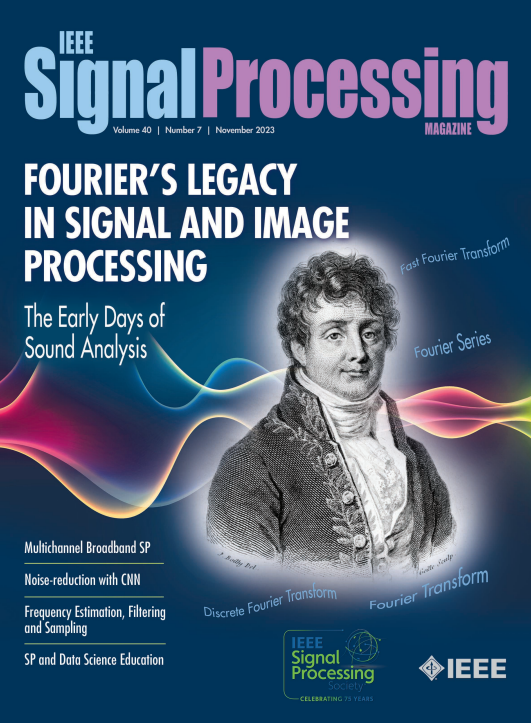多通道宽带信号处理的多项式特征值分解:一种提供新见解和解决方案的数学技术
IF 9.6
1区 工程技术
Q1 ENGINEERING, ELECTRICAL & ELECTRONIC
引用次数: 1
摘要
本文致力于多项式特征值分解(PEVD)及其在宽带多信道信号处理中的应用,其动机是EVD为窄带情况提供的最优解[1],[2]。总的来说,我们希望扩大电动汽车的效用,以解决宽带问题。多信道宽带信号是许多重要商业应用的核心,如电信、语音处理、医疗保健监测、天文和地震监测,以及军事技术,包括雷达、声纳和通信[3]。这些应用的成功通常取决于信号处理任务的性能,包括数据压缩[4]、源定位[5]、信道编码[6]、信号增强[7]、波束成形[8]和源分离[9]。在大多数情况下,对于窄带信号,执行EVD是信号处理算法的关键。因此,本文旨在介绍PEVD作为一种适用于许多宽带信号处理应用的新型数学技术。本文章由计算机程序翻译,如有差异,请以英文原文为准。
Polynomial Eigenvalue Decomposition for Multichannel Broadband Signal Processing: A mathematical technique offering new insights and solutions
This article is devoted to the polynomial eigenvalue decomposition (PEVD) and its applications in broadband multichannel signal processing, motivated by the optimum solutions provided by the EVD for the narrowband case
[1]
,
[2]
. In general, we would like to extend the utility of the EVD to also address broadband problems. Multichannel broadband signals arise at the core of many essential commercial applications, such as telecommunications, speech processing, health-care monitoring, astronomy and seismic surveillance, and military technologies, including radar, sonar, and communications
[3]
. The success of these applications often depends on the performance of signal processing tasks, including data compression
[4]
, source localization
[5]
, channel coding
[6]
, signal enhancement
[7]
, beamforming
[8]
, and source separation
[9]
. In most cases and for narrowband signals, performing an EVD is the key to the signal processing algorithm. Therefore, this article aims to introduce the PEVD as a novel mathematical technique suitable for many broadband signal processing applications.
求助全文
通过发布文献求助,成功后即可免费获取论文全文。
去求助
来源期刊

IEEE Signal Processing Magazine
工程技术-工程:电子与电气
CiteScore
27.20
自引率
0.70%
发文量
123
审稿时长
6-12 weeks
期刊介绍:
EEE Signal Processing Magazine is a publication that focuses on signal processing research and applications. It publishes tutorial-style articles, columns, and forums that cover a wide range of topics related to signal processing. The magazine aims to provide the research, educational, and professional communities with the latest technical developments, issues, and events in the field. It serves as the main communication platform for the society, addressing important matters that concern all members.
 求助内容:
求助内容: 应助结果提醒方式:
应助结果提醒方式:


